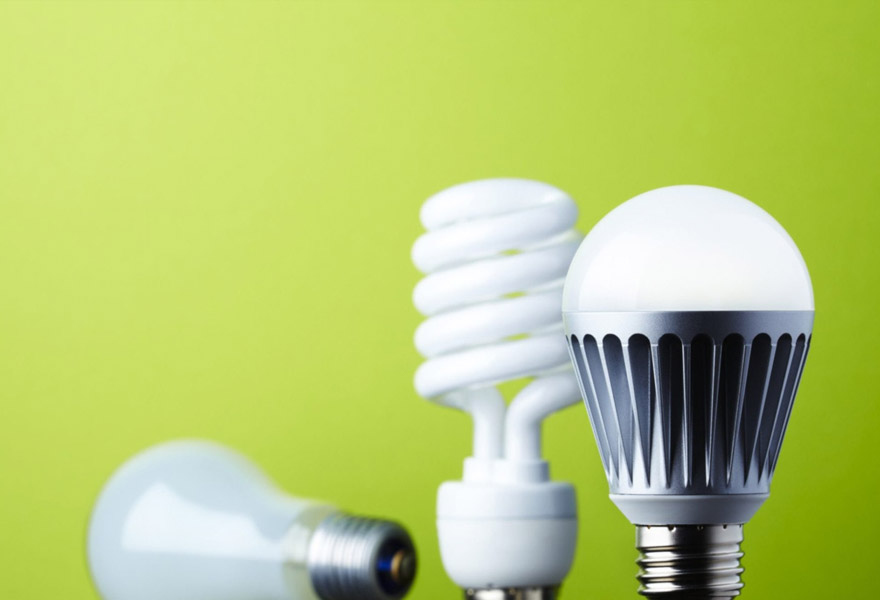
Replacement of Fluorescent Tubes with Linear LED Lamps
One common issue today is the replacement of conventional linear fluorescent lamps with linear LED lamps. This replacement typically applies to linear light fixtures with T8 (G13) tubular lamps, without the ability to control light intensity, and is generally part of a broader effort to save energy and reduce electricity consumption in various electrical installations.
However, it is essential to thoroughly understand and study the characteristics of LED tubes compared to the conventional fluorescent tubes being replaced.
When proceeding with this replacement, the electrician must consider factors related to the LED tubes such as:
– Luminous flux emitted
– Luminous efficiency
– Color rendering (Ra)
– Color temperature
– Lifespan (which can range from 12.5 to 15.5 years).
Με τον τρόπο αυτό αποφεύγεται το ενδεχόμενο της μείωσης της αρχικά επιθυμητής έντασης φωτισμού της ηλεκτρικής εγκατάστασης.
This ensures that the initially desired lighting intensity of the electrical installation is not reduced.
With today’s technological advancements in LED lighting, the process of replacing conventional fluorescent lamps with linear LED lamps can be done quickly and safely, by correctly selecting and installing the new LED lamps without the need for rewiring the light fixture. This process is often referred to as "plug and play," ensuring fast, safe, and proper operation.
The new technology LED linear lamps are categorized into two types, depending on the ignition and control system of the conventional fluorescent tubes being replaced.
Thus, we have linear LED lamps intended for operation with:
1. Conventional ignition systems, i.e., electromagnetic ballast and starter (CCG = Conventional Control Gear), which are characterized as EM-type linear LED lamps, and
2. Electronic high-frequency ignition systems, i.e., electronic ballast (ECG = Electronic Control Gear), which are characterized as HF-type linear LED lamps.
If the above points are met and the correct type of linear LED lamp is selected and procured, the replacement of the conventional fluorescent lamps in the fixture can begin, after first turning off the power supply to the fixture.
The replacement process follows the steps described below, depending on the existing ignition and operating system in the conventional fluorescent lamp fixture.
More specifically, if the conventional fluorescent lamp fixture includes:
1. conventional (electromagnetic) ballast and starter, once the conventional fluorescent tube is removed, the accompanying glow starter must also be removed and replaced with a special LED starter or LED tube protection starter/fuse. This essentially includes a cylindrical glass or ceramic fuse (1A/250V).
It should be noted that the conventional (electromagnetic) ballast remains in the circuit.
Next, the correctly selected LED tube for operation with a conventional (electromagnetic) ballast, the EM-type LED tube, is installed, and it is ready for operation.
2. electronic ballast, which as is known operates at high frequencies, once the conventional fluorescent tube is removed, the correctly selected LED tube for operation with an electronic ballast, the HF-type LED tube, is installed, and it is ready for operation.
It should be noted that the electronic ballast remains in the circuit.
With the advancement of HF-type linear LED tube technology, the safety of these products is ensured according to the new safety standard IEC62776, which applies to double-ended lamps. This standard specifies that no voltage should be present at the opposite end of the tube when one end is inserted into the socket.
This prevents the risk of electric arcs and, consequently, electric shocks during the installation of the LED tube in its holders.
For this reason, HF-type linear LED lamps have special safety switches at their ends.
Once the HF-type LED lamp is placed into both opposing holders and the safety switch is activated, only then is the current allowed to flow into the lamp circuit, ensuring safe handling.
In other cases from different manufacturers, the drive of the HF-type linear LED lamp includes a special isolation transformer. This prevents the formation of an electric arc (shock) if someone touches the pins of the lamp base, ensuring safe handling during installation in its holders. In any case, these materials must have double insulation.
Important Note
At this point, it is worth mentioning the case where, for some reason, the fixture includes an electronic ballast operating at high frequencies (HF), and a tubular LED lamp designed for operation with a conventional (electromagnetic) ballast (EM-type) is being used, i.e., there is no compatibility between the electronic ballast and the LED lamp.
In this case, after the conventional fluorescent lamp is removed, the electronic ballast must also be removed, and the selected EM-type LED tube for operation with a conventional (electromagnetic) ballast must be connected directly to the power supply, so it is ready for operation. If the electronic ballast is left in place, there is a risk of damaging the EM-type LED tube.
Practical Selection of the Appropriate Linear LED Lamp in an Existing Lighting Installation
The selection of the appropriate linear LED lamp for operation with a conventional (electromagnetic) ballast (CCG) or with an electronic ballast (ECG) can be made using the following methods:
A simple and functional way to choose the appropriate lamp for operation with a conventional (electromagnetic) ballast (CCG) or with an electronic ballast (ECG) is through:
1. visual inspection for the presence of a starter in the fixture. Thus:
a. if there is a starter, then a linear LED lamp for operation with a conventional (electromagnetic) ballast (CCG) is selected.
b. if there is no starter, then a linear LED lamp for operation with an electronic ballast (ECG) is selected.
2. visual inspection of an existing fluorescent lamp in operation using a digital camera (e.g., smartphone, tablet, etc.). Thus, if when observing the operating fluorescent lamp through the camera of the smartphone:
a. the emitted light flickers, then a LED lamp for operation with a conventional (electromagnetic) ballast (CCG) is selected.
b. the emitted light remains constant and does not flicker, then a LED lamp for operation with an electronic ballast (ECG) is selected.


